S Parithimar Kalaignan*
Department of Prosthodontics, Vinayaka missions sankarachariyar dental college, India
*Corresponding Author: S Parithimar Kalaignan, Department of Prosthodontics, Vinayaka missions sankarachariyar dental college, Salem, India.
Received: May 19, 2017; Published: June 02, 2017
Citation: S Parithimar Kalaignan. “Level of Denture Hygiene Education and the Quality of Denture Fabricated By Dental Students ”. Acta Scientific Dental Sciences 1.1 (2017): 04-08.
Purpose: This study presents the results from a survey to assess the level of denture and oral hygiene education practiced by dental students and degree of satisfaction with the dentures issued by dental students.
Materials and methods: A total of 30 previous denture wearers and 30 first time denture wearers were asked to fill in a questionnaire to assess their denture and oral hygiene awareness and to grade the quality of the dentures issued by dental students based on the presence of any complaint(s) after reviews.
Results: A comparison of the level of awareness of denture hygiene between Group 1 and Group 2 and Group 2 patients have higher awareness compared to Group 1. A Chi-Square test was done to test the significance between the two groups. There is significant increase in awareness level of Group 2 (new denture wearers) compare to Group 1 (previous denture wearers) as p = 0.0398 hence the null hypothesis is refused since p < 0.05.
Conclusion: Despite the 43.3% of patients not receiving any previous education on denture and oral hygiene, they have an average level of awareness on maintaining denture and oral hygiene. Few patients have lack of awareness but had shown keenness in learning in order to improve their oral health. Hence, it is the duty of dental practitioners to educate and re-enforce denture hygiene in patients.
Keywords: Denture Hygiene; Oral Hygiene; Clinical Implications; Students; Education; Dental Health
The aging population contributes mainly to the increase in demand of dentures. Dentures are prosthetic devices constructed to re-place missing teeth in the oral cavity. It restores masticatory functions, improves patient’s appearance and aesthetics and enables patients to speak and pronounce better. Therefore, denture hygiene and maintenance is important to prevent the build-up of plaque, food, calculus and stains on a patient’s denture [1-3].
Acrylic is the most commonly used material in denture fabrication. The surface of acrylic dentures may contain micro porous surfaces that provide a wide range of environments to support microorganisms that threaten the health of a medically impaired patient. (Shay)
It is vital that patients do not neglect the daily cleaning of their dentures as poor hygiene may lead to halitosis, staining of the dentures and acrylic teeth, irritation to tissues, calculus deposition on teeth as well as yeast infections of the oral cavity (candidiasis and denture stomatitis). The denture acts as a reservoir that enables Candida to adhere and resist the flushing action of saliva. This is the first stage in the process leading to colonization and infection.
Hence, dental professionals play an important role in patient education by giving proper denture hygiene instructions and emphasiz-ing on the benefits and consequences if daily cleaning is not carried out [4].
A survey was conducted to evaluate the level of patient education by dental students in regards to denture hygiene instructions. A comparison was made between previous denture wearers and first time denture wearers. A feedback form was also included to evaluate the satisfaction level of dentures issued by dental students. Poorly fabricated dentures cause pain on eating due to improper adaptation and rocking and further lead to ulceration of the tissue surface. The survey is to ensure that the quality of dentures fabricated can be assessed and continuously improved upon [5].
(Group 1) 30 edentulous & partially edentulous patients with history of denture wearing are selected. A survey was conducted on the patients on their first appointment regarding their denture and oral hygiene that were previously educated by other dental practitioners. Then, (Group 2) 30 new edentulous & partially edentulous patients were selected. Survey was conducted only when the patients are recalled for review after denture issue to determine the denture hygiene instructions that are given to them by dental students. A comparison between both surveys was done. Questions that were asked are based on ‘yes’ and ‘no’ to assess their level of denture and oral hygiene awareness.
Points were given according to the answers that displayed the right hygiene awareness and tabulated.
0-3 = Poor awareness
4-5 = Average awareness
6-8 = Good awareness
A feedback form was given to the 60 patients when they were recalled for reviews (24 hours, 5 days & 14 days) after a new denture is issued. Evaluation was done based on the presence of any complaint(s) patient had after the usage of the denture(s) issued. 4 aspects were reviewed to assess the quality of denture(s) issued:
The differences of level of hygiene awareness between patients who received instructions and patients who did not receive any instructions on denture and oral hygiene were compared in percentage. The chi-squared test was done to determine the hypothesis with the significance level of 0.05.
Group 1 (30 patients with history of denture(s) wearing) and Group 2 (30 new patients who were recently issued denture(s) by den-tal students) are compared to determine if they received any denture and oral hygiene education. A comparison of the level of awareness of denture hygiene between Group 1 and Group 2 was carried out (Table 1) and Group 2 patients have higher awareness compared to Group 1. A Chi-Square test was done to test the significance between this difference between Group 1 and Group 2. There is significant increase in awareness level of Group 2 (new denture wearers) compare to Group 1 (previous denture wearers) as p = 0.0398 hence the null hypothesis is refused since p < 0.05.
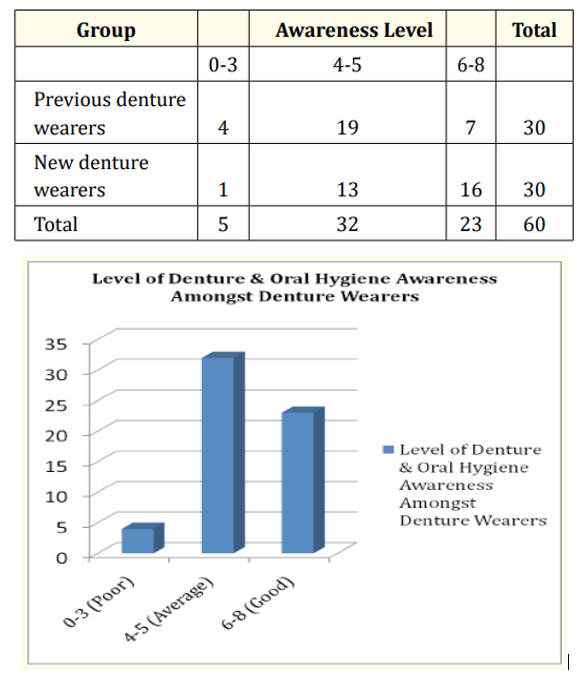
Table 1: Comparison of Denture Hygiene Awareness between Previous & New Denture(s) Wearers.
In Group 1, out of 30 patients, only 17 of them have received denture hygiene instructions by previous dental personnel, while in Group 2, 28 out of the 30 patients have received denture hygiene instructions from dental students. (Table 2) By combining Group 1 and Group 2, 51 out of the 60 patients removed their denture(s) at night, 56 of them clean their denture(s), and 52 patients also practice oral hygiene measures after removal of denture and only 9 patients having problems in maintaining denture hygiene. (Table 3) The 60 patients were grouped according to their level of denture hygiene awareness, 4 patients have poor level of awareness (score 0-3), 32 out of the 60 patients have average hygiene awareness (score 4-5), and 24 patients score good level of hygiene awareness (score 6-8). (Table 4)
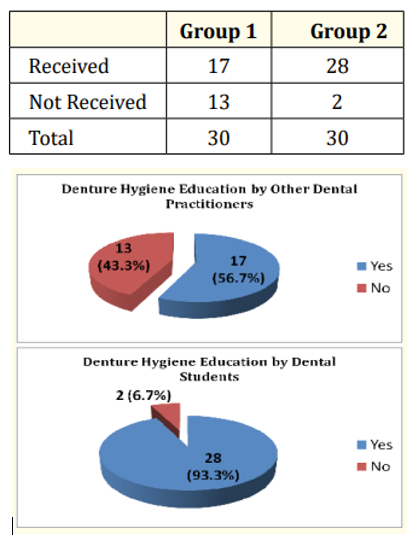
Table 2: Comparison of patients receiving and not receiving hygiene instructions.
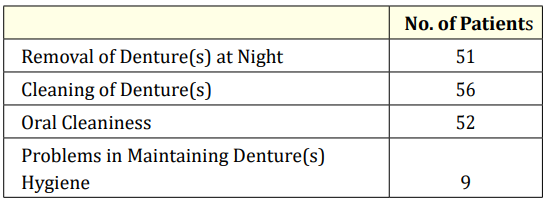
Table 3: The no. of patients with denture and oral hygiene awareness.
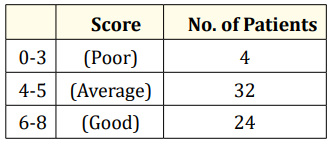
Table 4: The Grouping of patients according to their level of hygiene awareness.
Based on the presence of complaints, the 60 patients were tabulated under 4 aspects, 12 patients have no complaints upon review, 19 of them complained of loose/shaky dentures, 36 of them experience pain upon wearing denture(s), 21 patients developed ulcer after wearing denture, and 20 patients were unable to eat with their denture(s) (Table 5 and 6).

Table 5: Quality of Denture (s) Fabricated based on Patients’ Complaint (s).
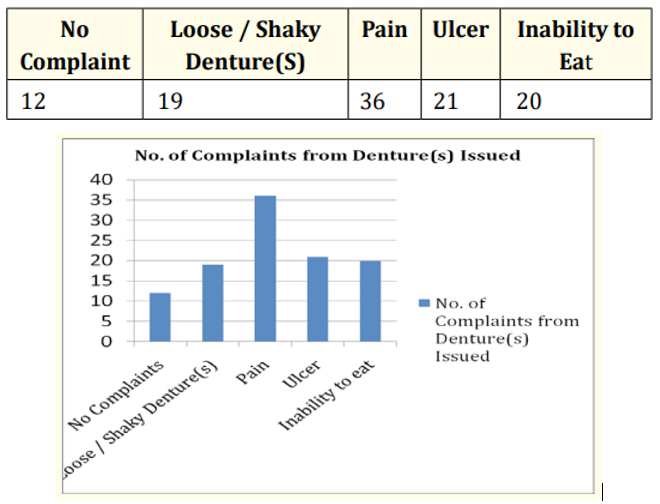
Table 6: Number of Complaints from Denture(s) Issued.
According to the results of this study, 56.7% of previous denture wearers did not receive denture hygiene instructions and 43.3% were educated by their previous dentists. This however does not signify that all 43.3% of patients were compliant and practiced denture cleaning thoroughly as some still presented with unhygienic dentures and complained of facing difficulties in cleaning dentures. This could be due to the patient’s attitude and stance toward dental care and inability to maintain a denture cleaning routine in the long run [6].
A few (8 patients out of 15) patients however have high denture hygiene awareness despite not receiving instructions as they had been advised by friends or family members. Certain patients may have sought the services of dental technicians who are unlicensed dental practitioners but have considerable experience fabricating dentures. As the technicians are not trained or received higher education in prosthodontics, this may be the reason why many patients were not educated in denture cleaning procedures when the denture was issued.
The most effective way to keep dentures clean is by rinsing and brushing it several times daily and soaking it in a chemical solution at night. Brushing should be done with denture paste instead of abrasive cleaners as it scratches the denture and the act of soaking helps to remove or loosen light stains and deposits. Dentures should never be worn overnight as the constant contact of the denture surface with soft tissues acts as a reservoir for microorganisms which further leads to denture stomatitis or candidiasis.
As dental students, it is important to ensure that the importance of denture and oral hygiene care are instilled into patients and implemented in daily interactions between students and patients. This is why 93.3% of first time denture wearers from the survey indicated that they were given denture hygiene instructions. 51.7% of the total 60 patients scored average marks on the denture hygiene awareness chart and 38.3% scored good marks indicating that most patients practiced considerably sufficient denture cleaning procedures [7].
The remaining 10% of patients who had poor denture hygiene awareness either practiced inadequate cleaning or were not instructed properly by previous dentists. Some patients would only soak their dentures but do not brush or clean the soft tissues in the oral cavity. Complete denture patients often neglect to maintain the cleanliness of their gums as they are of the impression that it is not necessary as they no longer have teeth. This further emphasizes the need to advise patients to brush and massage their gums with a soft damp cloth. Patients also brush their dentures with toothpaste as they were not informed that this will cause scratches and further accumulation of stains and plaque on the scratched surface. Soft brushes can be used to prevent scratching of the denture.
This study also includes a questionnaire on the satisfaction level of patients towards their dentures after being issued by dental students. Often there is not a total agreement between the patient and dentist in assessing the adequacy and functionality of the dentures. The fact that a denture with poor quality may be well tolerated in one patient while a well-made one may be a failure in another is a frequent source of confusion and frustration.
A significant relationship between condition of the mucosa of denture bearing areas and pain and discomfort was anticipated. Patients who were medically compromised or treated with medication such as steroids that produce oral side effects with intraoral manifestations will experience more difficulties with their dentures. Patients are commonly presented with pain on the soft tissues, ulceration, inability to eat and inadequate retention. However, some patients may have been issued two dentures and face problems with only one thus affecting the result of the survey [8].
Tight or irregular dentures are usually attributed to processing errors and fabrication techniques which may differ from student to student. Hence, quality control cannot be maintained for the dentures fabricated in dental college. Tightness or looseness of the denture leads to ulceration from constant friction and the inability to eat due to pain. Loose dentures may be due to overextension or over-trimming.
The high expectations of first time denture wearers should also be taken into consideration. Recompilations caused by poorly made dentures are the increase in number of visits a patient has to make, unnecessary discomfort, trauma to soft tissues hence the inability to eat and lastly the loss of confidence the patient has towards the services offered by the dentist [9].
There are several clinical implications of this survey. The main aim was to assess the awareness of patients in regards to denture hygiene and also the quality of dentures fabricated by students. This reflects on the student’s competency and steps can be taken to continuously improve student and patient education and also the quality of work produced. Good denture hygiene will lead to less medical complications and improve the quality of life of patients. Effort should be made to pinpoint the determining factor of denture fabrication failure and this is where the lecturer plays an important role in providing constant monitoring and guidance. The lack of experience of students also contributes to low denture quality as they are unable to assess or diagnose the problem during denture issue. Students should be more motivated to improve their clinical skills and offer continuously improving services to their patients.
From the study, it is shown that despite the 43.3% of patients not receiving any previous education on denture and oral hygiene, they have an average level of awareness on maintaining denture and oral hygiene. Few patients have lack of awareness but had shown keenness in learning in order to improve their oral health. It is important to stress on denture hygiene as it in turn affects the general dental health. It is the duty of dental students as the future dentists serving the community to emphasis on the importance.
Also, the second survey also shown that out of 60 patients, 48 patients had returned with complaint(s) during their denture review. This has shown that the lack of quality in the denture fabrication by dental students. As dentures play an important role as natural teeth replacement, students should learnt from past mistakes and improve their skills.
Copyright: © 2017 S Parithimar Kalaignan. This is an open-access article distributed under the terms of the Creative Commons Attribution License, which permits unrestricted use, distribution, and reproduction in any medium, provided the original author and source are credited.
ff
© 2024 Acta Scientific, All rights reserved.